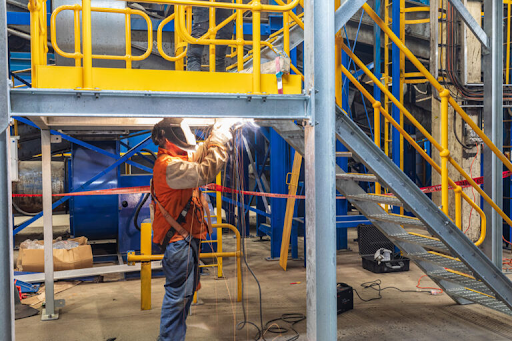Brake pads are the unsung heroes of every vehicle, quietly ensuring our safety as we traverse the roads. While often overlooked, these small yet crucial components play a monumental role in the braking system, translating the force from your foot on the pedal into the friction needed to halt your vehicle safely. Understanding the intricacies of brake pads sheds light on their importance and how they contribute to road safety.
The Anatomy of Brake Pads: From Friction to Functionality
At the heart of every braking system lies the brake pads, which clamp onto the spinning rotors to slow down or stop the wheels from turning. Composed of various materials, including ceramic, semi-metallic, and organic compounds, brake pads are engineered to withstand immense heat and pressure generated during braking.
Types of Brake Pads: Finding the Right Fit for Your Vehicle
Brake pads come in different types, each offering distinct advantages and disadvantages. Ceramic brake pads, known for their durability and low noise levels, are favored by many drivers for their smooth performance. On the other hand, semi-metallic brake pads provide excellent stopping power, making them ideal for heavy-duty applications such as towing or high-performance driving.
The Science Behind Friction: How Brake Pads Slow Down Your Vehicle
When you press the brake pedal, hydraulic pressure forces the brake calipers to squeeze the brake pads against the rotors. This action creates friction, converting kinetic energy into thermal energy, which is then dissipated into the surrounding air. The resulting frictional force slows down the rotation of the wheels, bringing your vehicle to a halt.
Factors Influencing Brake Pad Performance: From Material Composition to Driving Conditions
Several factors influence the performance and longevity of brake pads. The material composition of the pads, driving habits, environmental conditions, and vehicle weight all play pivotal roles in determining how well brake pads perform over time. Regular maintenance, including brake inspections and pad replacements, is essential to ensure optimal braking performance and safety.
Signs of Worn Brake Pads: Recognizing the Telltale Indications
As brake pads wear down over time, they exhibit certain signs that indicate the need for replacement. Squealing or grinding noises, reduced braking responsiveness, and vibrations or pulsations felt through the brake pedal are common indicators of worn brake pads. Ignoring these warning signs can lead to decreased braking performance and potential safety hazards on the road.
Brake Pad Replacement: A Crucial Maintenance Task
Routine brake pad replacement is a critical aspect of vehicle maintenance that should not be overlooked. While the frequency of replacement varies depending on driving habits and environmental factors, a general rule of thumb is to replace brake pads every 30,000 to 70,000 miles. Timely replacement ensures optimal braking performance and prevents damage to other braking system components.
DIY vs. Professional Installation: Weighing the Options
When it comes to brake pad replacement, drivers often face the dilemma of whether to tackle the task themselves or seek professional assistance. While DIY replacement can save money, it requires technical know-how and the right tools to ensure proper installation. Professional installation, on the other hand, guarantees expertise and precision, albeit at a higher cost.
Environmental Considerations: The Eco-Friendly Evolution of Brake Pads
In recent years, there has been a growing emphasis on developing eco-friendly brake pad alternatives that minimize environmental impact. From asbestos-free formulations to recycled materials, manufacturers are exploring sustainable options to reduce the carbon footprint of brake pad production and disposal. Choosing environmentally conscious brake pads contributes to a greener automotive industry.
Brake Pad Maintenance Tips: Prolonging Lifespan and Performance
Proper maintenance is key to extending the lifespan and optimizing the performance of brake pads. Regular inspections, including checking pad thickness and monitoring for signs of wear, allow for early detection of potential issues. Additionally, avoiding aggressive driving habits and practicing smooth braking techniques can help preserve brake pad integrity and efficiency.
The Future of Brake Pad Technology: Innovations Driving Safety and Performance
Advancements in brake pad technology continue to push the boundaries of safety and performance. From advanced friction materials to integrated sensor systems that monitor brake pad wear in real-time, future innovations aim to enhance driver awareness and responsiveness on the road. As automotive technology evolves, brake pads will undoubtedly play a pivotal role in shaping the future of transportation.
FAQs: Answering Your Burning Questions About Brake Pads
What are the common signs of worn brake pads, and when should they be replaced?
Several signs indicate worn brake pads, including squealing or grinding noises, reduced braking responsiveness, and vibrations felt through the brake pedal. It’s crucial to replace brake pads promptly when these signs occur to maintain optimal braking performance and ensure safety on the road.
In Conclusion: Ensuring Safety One Brake Pad at a Time
Brake pads may be small in size, but their impact on vehicle safety is monumental. Understanding their role in the braking system, from friction generation to wear indicators, empowers drivers to prioritize maintenance and make informed decisions when it comes to replacement. By investing in quality brake pads and adhering to regular maintenance schedules, drivers can navigate the roads with confidence, knowing that their braking system is in optimal condition.








